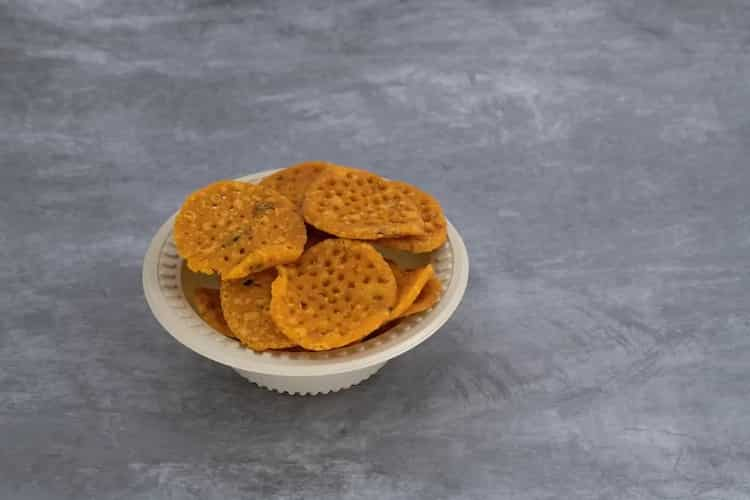In Bengaluru, the oil begins to sizzle as the monsoon arrives. Given the prevalence of intermittent fasting diets today, South Indian cooks continue their tryst with their gastronomic destiny, though not entirely or fully. Instead, they make significant contributions.
South Indian households begin taking out their deep-frying kadhais as it starts to rain. A South Indian Mami (aunty) worth her salt will deep-fry papad or happala pretty much every day, so this moment doesn't come around very often. Most conventional homes use this handy method. What better method to hide leftovers, after all? Happala or Sandige (vadams or fritters) are simply placed on top of them while still hot before serving. As snow covers mountains, these white tapioca discs will rest, concealing any imperfections beneath them. It's Western advice or warning to eat your vegetables before you can have dessert. In Bengaluru, people tempt their families to consume the leftover curries by topping them with a savoury temptation.

It's different during the monsoon. It would rain heavily and copiously all over Bengaluru, day and night, as the clouds shed their weight. All are stranded at home. The popular snack Kannadigas refer to as nippattu is what everyone naturally seeks for. Thattai is the term used in Tamil. In Andhra, this is referred to as chekkalu. One understated but potent ingredient, the liberal use of sesame seeds, peanuts, roasted gram (putani and chutney kadalai), and curry leaves, is said to make the nippattu significantly superior to the other regional versions. Nippattu is made easier to store and keeps its crispiness for a longer period of time thanks to all of this, which is ultimately the goal of South Indian snacks. This makes the nippattu onomatopoeic. It makes a bite-like sound.
The dish is easy to prepare. Gently fry skinless peanuts, you then grind them with equal parts white sesame seeds, roasted gram, and, if you'd want, dry coconut flakes. In a large bowl, mix the rice flour, sooji (for crunch), and maida next (to hold the thing together). Salt, chilli powder, and asafoetida are your final additions. Finally, combine the toasted peanuts mix. Knead the ingredients into tiny balls by combining oil and water. Pat into small, flat round circles the size of a jam jar lid. Deep fry.
To add some pattern and preserve the crispness, some cooks skillfully prick the surface of the nippattu with small fork holes. Before adding water and forming balls, some people drizzle heated ghee over the entire mixture. That's all right, no big deal. When you bite into it, you get a satisfying crunch and the flavour of the sesame-peanut mixture.
Nippattu is strictly reserved for tea time for traditional Kannadigas, but during the monsoon, this custom is eased and Nippattu is consumed whenever it rains. It is calming to observe the crimson ground and pelting rain from a balcony in Bengaluru. A cup of masala chai and a plate of nipattus are two things that can enhance this experience.


